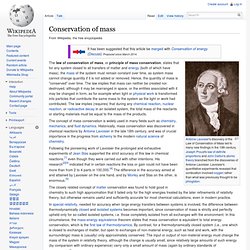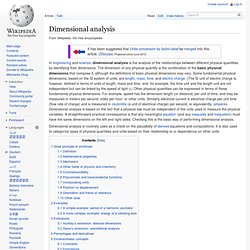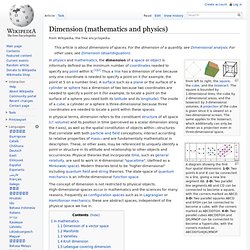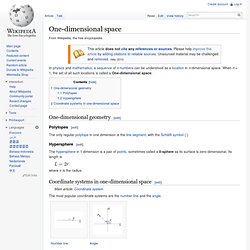

La science au quotidien. Partons d'une chose que tout le monde connaît: la lumière.

La lumière, comme on l'a souvent vu dans cette rubrique, est une onde électromagnétique, c'est-à-dire de l'énergie électrique et magnétique qui se propage dans l'espace, un peu comme une vague à la surface de l'eau. Quand une charge électrique est accélérée ou change de direction (si on «brasse» un électron, par exemple), cela dérange le champ électromagnétique en un point de l'Univers et crée ainsi une «vague électromagnétique» - à la manière d'un caillou qui, jeté à l'eau, en dérange la surface. De la même façon, on croit que l'accélération de toute masse aurait un effet un peu similaire, en créant des ondes gravitationnelles.
Albert Einstein- Théorie de la relativité partie 3/4. Albert Einstein- Théorie de la relativité Partie 4/4. Albert Einstein- Théorie de la relativité partie 2/4. Einstein for the Masses. Le Mystère de l'horloge ( relativité d'einstein ) Un siècle après, Einstein dépassé. Documentaire - Einstein - le mystere de l'horloge - la theorie de la relativite. Einstein. Documentaire Ce qu' Einstein ne savait pas encore Le rêve d' Einstein L' univers élégant Théorie des cordes doc arte fr science.
Les secrets de la gravité. Supergravité. Antigravité. Voyage dans l'espace-temps. La vitesse de la lumière complet en francais. Vitesse supraluminique. Un article de Wikipédia, l'encyclopédie libre.

Chronology of the States of Matter and Phase Transitions. Conservation of mass. The concept of mass conservation is widely used in many fields such as chemistry, mechanics, and fluid dynamics.

Historically, mass conservation was discovered in chemical reactions by Antoine Lavoisier in the late 18th century, and was of crucial importance in the progress from alchemy to the modern natural science of chemistry. Following the pioneering work of Lavoisier the prolonged and exhaustive experiments of Jean Stas supported the strict accuracy of this law in chemical reactions,[1] even though they were carried out with other intentions. His research[2][3] indicated that in certain reactions the loss or gain could not have been more than from 2 to 4 parts in 100,000.[4] The difference in the accuracy aimed at and attained by Lavoisier on the one hand, and by Morley and Stas on the other, is enormous.[5] History[edit] The conservation of mass was obscure for millennia because of the buoyancy effect of the Earth's atmosphere on the weight of gases. Matter. Before the 20th century, the term matter included ordinary matter composed of atoms and excluded other energy phenomena such as light or sound.

This concept of matter may be generalized from atoms to include any objects having mass even when at rest, but this is ill-defined because an object's mass can arise from its (possibly massless) constituents' motion and interaction energies. Thus, matter does not have a universal definition, nor is it a fundamental concept in physics today.
Matter is also used loosely as a general term for the substance that makes up all observable physical objects.[1][2] All the objects from everyday life that we can bump into, touch or squeeze are composed of atoms. This atomic matter is in turn made up of interacting subatomic particles—usually a nucleus of protons and neutrons, and a cloud of orbiting electrons.[3][4] Typically, science considers these composite particles matter because they have both rest mass and volume. Dimensional analysis. Dimensional analysis is routinely used as a check on the plausibility of derived equations and computations.

It is also used to categorize types of physical quantities and units based on their relationship to or dependence on other units. Great principle of similitude[edit] The basic principle of dimensional analysis was known to Isaac Newton (1686) who referred to it as the "Great Principle of Similitude".[1] James Clerk Maxwell played a major role in establishing modern use of dimensional analysis by distinguishing mass, length, and time as fundamental units, while referring to other units as derived.[2] The 19th-century French mathematician Joseph Fourier made important contributions[3] based on the idea that physical laws like F = ma should be independent of the units employed to measure the physical variables. Dimension. A diagram showing the first four spatial dimensions. 1-D: Two points A and B can be connected to a line, giving a new line segment AB. 2-D: Two parallel line segments AB and CD can be connected to become a square, with the corners marked as ABCD. 3-D: Two parallel squares ABCD and EFGH can be connected to become a cube, with the corners marked as ABCDEFGH. 4-D: Two parallel cubes ABCDEFGH and IJKLMNOP can be connected to become a hypercube, with the corners marked as ABCDEFGHIJKLMNOP.

In physical terms, dimension refers to the constituent structure of all space (cf. volume) and its position in time (perceived as a scalar dimension along the t-axis), as well as the spatial constitution of objects within—structures that correlate with both particle and field conceptions, interact according to relative properties of mass—and are fundamentally mathematical in description. The concept of dimension is not restricted to physical objects. Dimension = 1st. One-dimensional geometry[edit] Polytopes[edit] The only regular polytope in one dimension is the line segment, with the Schläfli symbol { }.

Hypersphere[edit] where is the radius. Coordinate systems in one-dimensional space[edit] The most popular coordinate systems are the number line and the angle. Length = 2nd Dimension. Bi-dimensional Cartesian coordinate system In physics, our bi-dimensional space is viewed as a planar representation of the space in which we move, described as bi-dimensional space or two-dimensional space.

History of two-dimensional space[edit] Euclid's Elements dealt almost exclusively with two-dimensional geometry, developing such notions as similarity of shapes, the Pythagorean theorem (Proposition 47), equality of angles and areas, parallelism, the sum of the angles in a triangle, and the three cases in which triangles are "equal" (have the same area), among many other topics. The idea of this system was developed in 1637 in writings by Descartes and independently by Pierre de Fermat, although Fermat also worked in three dimensions, and did not publish the discovery.[1] Both authors used a single axis in their treatments and have a variable length measured in reference to this axis. Depth = 3rd Dimension.
Three-dimensional Cartesian coordinate system with the x-axis pointing towards the observer(See diagram description for needed correction.)

Fourth Dimension. Fourth dimension may refer to: Science[edit] Four-dimensional space, the concept of a fourth dimensionSpacetime, the unification of time and space as a four-dimensional continuumMinkowski space, the mathematical setting for special relativity.
